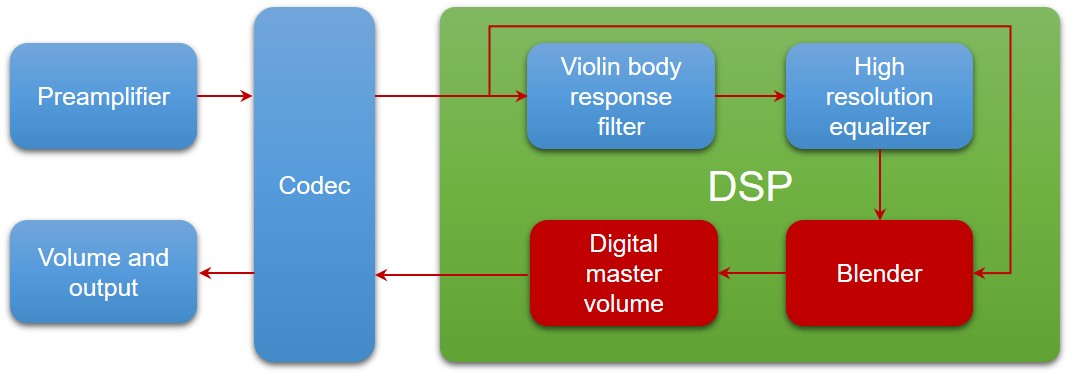Vsound blender and master volume
Vsound is equipped with a blender that allows you to mix the original signal from the violin pickup (known as the dry signal) with the response currently selected on the hardware (known as the wet signal). This is a particularly useful feature for players of acoustic violins fitted with a pickup, when it is desirable to preserve some of the original timbre but colour it with a tonal contribution whose emphasise can be controlled from the software.
To use the blender, the unit must be connected to the computer with the software running. The two buttons on the screenshot show how to increase or decrease the mix in 5% steps. Any changes are instantly heard in the vsound unit’s output. Once you are happy with the result, the unit can be unplugged from the computer. Now, whenever the unit is powered up, it will remember the mix ratio, even if you select a different violin response.
The digital master volume, which ranges from 0 – 10 in 4 dB steps, is adjusted from the software with the unit connected to the computer. In effect, this control determines the sensitivity of the manual rotary volume control on the front panel of the hardware. By default, the digital master volume is set to 5. As with all the other controls, any adjustments made to the digital master volume are retained on power down and recalled when it is switched on again.
Case study. These two sound files demonstrate the blender of vsound in action. The first is a raw electric example, and the second is the raw electric mixed at 50% with a Stradivarius response.
Electric
Electric/Stradivarius mix, 50:50



